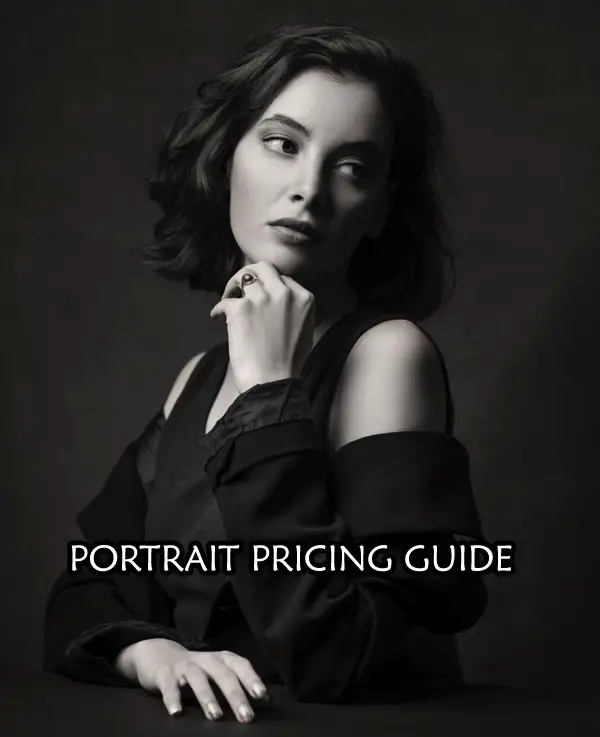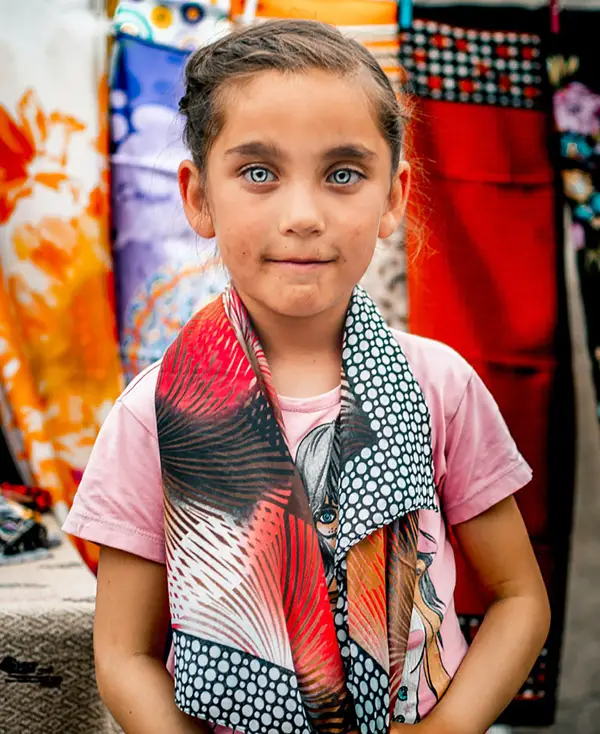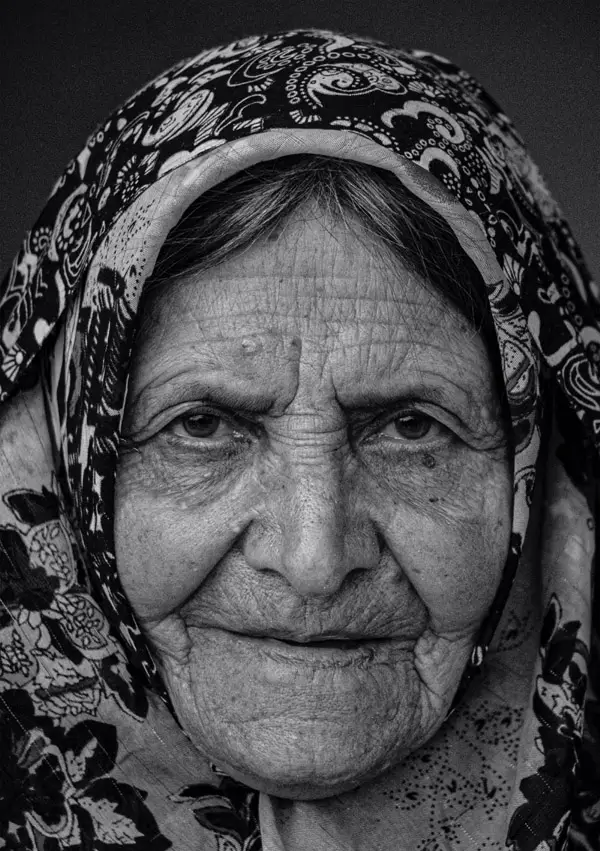As a portrait photographer, you know that the heart of your business beats in the rhythm of capturing souls through lenses. But here’s something not many will tell you: there’s an art to portrait photography pricing too.

Just think about it. How do you put a price on immortalizing someone’s personality in a snapshot? You’re not just pressing buttons; you’re creating magic!
You might be wondering, “How can I create my own masterpiece when it comes to setting prices?” Or perhaps thinking, “I don’t want to undersell myself or scare away potential clients.”
Understanding Portrait Photography Pricing
If you’re a professional photographer or someone considering getting into the photography business, it’s essential to grasp portrait photography pricing. Figuring out portrait photography pricing may appear complicated at first, yet with some knowledge of the business’ fundamental principles and procedures it will all start to become clear.
The number one thing to avoid when pricing your photography is spending more than you make. You need to price your images based on time spent behind the lens and editing them post-shoot as well as the market value of your work.
Pricing models vary greatly among photographers because each photo shoot has its unique requirements. The same goes for commercial photography where photographers charge differently depending on various factors such as licensing fees involved or specific requests from clients that require additional costs.
The Role of Experience Level
An experienced photographer may charge higher rates compared to beginner photographers due to their skills and expertise gathered over years in this field. Their portfolio plays an important role here; potential clients are often willing to pay more if they see consistent high-quality output across different assignments.
This doesn’t mean beginners can’t earn money through portrait photography photoshoots though. They just need to create a compelling portfolio showcasing their best work while offering competitive prices that appeal to new customers initially.
Determining Your Rates
Another crucial aspect to consider when setting up a portrait photographer’s pricing involves evaluating current market trends along with understanding how much effort it takes to deliver the final product, including pre-production meetings (if any), travel expenses, session fees, and photo editing time after the shoot finishes before delivering digital files to the client.
Format, an online platform dedicated to helping artists showcase and sell art efficiently, provides useful resources to help determine fair rates for services provided, ensuring sustainable growth within the industry.
It’s not feasible to apply a universal pricing structure; it varies based on elements like where you are located and who your customers are. But by following these principles and avoiding common mistakes like undercharging, you can set prices with confidence and elevate your portrait photography business.
Finding Balance Between Value & Client Expectations
Balancing between what you offer (value) and what the client expects (price) requires careful consideration of all influencing factors including those mentioned above along with others like print packages offered after family photo shoots or additional fees for extra time spent on a photography session.
One thing’s clear: portrait photographers need to be flexible and adaptable in their pricing model, as shoot prices can vary greatly. Whether it’s offering mini sessions at lower costs or including add-ons like additional photo editing hours for an additional fee, providing options makes your services more appealing to potential clients of various budgets.
Factors Influencing Portrait Photography Pricing
When it comes to portrait photography pricing, various elements come into play. Let’s take a closer look at how a photographer’s experience level and the event location can affect their day rate or hourly rate.
The Role of Experience in Pricing
An experienced photographer typically charges more than someone just starting out. The reason? Years spent honing skills, mastering lighting techniques, and understanding client needs add significant value to the final product.
A seasoned professional has an extensive portfolio showcasing different styles and subjects. This diverse range demonstrates versatility which is often reflected in their rates.
Location-Based Pricing Considerations
Beyond expertise, where you plan your photo shoot plays a part too. A rural setting may involve travel costs that aren’t necessary for urban sessions.

In cases like these, some professionals incorporate additional fees into their price list or ask for an additional fee if they need hard drives for storage due to the volume of photos taken during such shoots. So before you finalize any deal with your chosen artist, make sure there are no hidden extras that could surprise you later on.
Format offers comprehensive guides about this subject matter including licensing fee considerations which might vary greatly depending on whether it’s commercial photography or not; even beginner photographers find this resource invaluable when establishing their own pricing models.
If we analyze what successful professional photographers do differently compared to those who struggle financially – one key factor stands out: smart pricing. It’s essential not only because it allows them earn money but also as it ensures sustainability over time while enabling them spend adequate amounts of time perfecting each shot without feeling rushed.
For example, if you’re hiring a photographer for a photography shoot and they are spending the entire day at your property, their day rate will likely reflect this time commitment. The longer a project takes, the more expensive it is likely to be.
Remember: understanding these factors can help guide your expectations when sourcing quotes from potential photographers.
Different Pricing Models for Portrait Photography
The Flat Rate Model
Setting the right price can be a tricky task for any portrait photographer. With various pricing models available, it’s essential to understand each one to make an informed decision. The key is balancing your worth as a professional and potential clients’ budgets.
One popular model is charging a flat rate. This means you set a fixed price for your services, regardless of time spent on the photo shoot or post-production work like photo editing. It gives clients clarity about costs upfront but doesn’t account for extra hours worked.
The Hourly Rate Model
If you’re more comfortable billing based on time spent, consider an hourly rate model. You get paid according to how many hours you invest in shooting and editing images from the photography session.
This approach can provide fair compensation if unexpected challenges extend the photoshoot beyond planned timescales; however, it may deter potential clients who prefer knowing their total expenditure beforehand. Image usage fees are another factor that might affect your final prices when using this model.
Sitting Fee Plus Purchases Approach
A sitting fee plus purchases approach involves charging separately for the photography session (sitting fee) and additional items such as digital files or print packages which are purchased afterwards by clients. This strategy allows photographers to earn money even if no prints or products are bought afterward; although some customers may feel overwhelmed with these separate charges.
Freelance Photographer Day Rate Methodology
A freelance photographer day rate methodology could be ideal if working primarily on larger projects where dedicating whole days at once makes sense. It ensures payment not just per project but for each day you dedicate to it, giving an accurate reflection of your time and effort.
No single solution is suitable for all. Every photography package will vary greatly depending on factors such as location, client needs or event specifics. According to a cost-plus pricing model analysis done by experts in the field, determining how much to charge should always consider costs involved plus a profit margin.
Deliverables and Final Products in Portrait Photography
When employing a professional for portrait photography, it is essential to be aware of what the eventual outcome will be. It could be digital files or print packages, but let’s dig into that more.
Digital Images: Your Virtual Keepsakes
The most common deliverable from any photo shoot is high-resolution digital images. These are usually delivered via email or through an online gallery. They offer flexibility because they can be used across different platforms and media types.
You might ask about additional costs for these files though. Some photographers include them in their package while others charge extra. So make sure to clarify this before booking your session.
Print Packages: Tangible Memories
Beyond just digital copies, some photographers also give physical prints as part of their service offering. A variety of sizes may be included in the price list provided by your photographer – everything from wallet-sized prints up to large wall portraits could potentially be available.
An interesting fact here; despite living in a mostly-digital age, many clients still love having tangible photographs they can hold or display at home. Just like with the digital images though, don’t forget to ask if there will be additional fees involved for print packages too.
Hard Drives: For Massive Shoots
In case of extensive shoots such as photography sessions where hundreds (or even thousands) of high-quality pictures are taken, delivering all those files digitally might not always work well due to file size constraints. In such cases, providing hard drives containing all captured photos becomes necessary.
This method ensures nothing gets lost during transmission and allows customers access every shot without needing constant internet connectivity. But again remember- depending on how your photographer operates, this could either be part of the initial price or come with an additional fee.
Budgeting for Portrait Photography
Creating a budget for portrait photography can feel like navigating uncharted territory. Formulating a budget for portrait photography can be likened to solving an intricate jigsaw puzzle – but with the right know-how, it’s far from insurmountable.
To start, understanding the average price of professional photographers is crucial. It’s not just about what they charge per shoot; their rates often reflect time spent on photo editing and other additional costs such as travel expenses or props.

An experienced photographer may charge more due to their expertise and the quality of their work. But don’t let this deter you. A top-notch family photo or portrait photography photoshoot is worth every penny when captured by seasoned professionals.
The Role of Session Fee
A significant chunk of your budget will go towards the session fee which typically covers the time involved in setting up and conducting the photoshoot itself. This may vary greatly depending on factors such as location, length of shoot, number of subjects being photographed among others. Format provides an excellent guide detailing these considerations if you need more help.
Pricing Models: What You Get For Your Money
Different pricing models include elements like digital files delivered after a shoot or print packages available at extra cost – sometimes referred to as “photo products”. Some photographers may also offer mini sessions – shorter shoots at lower prices but with fewer deliverables than full-length sessions. The final product can be vastly different based on these choices so consider them carefully.
Add-Ons Can Add Up.
You should also account for possible add-ons while planning your budget since things like licensing fees for commercial use or hard drives containing all images from a shoot could increase total expenditure. Always ask for a comprehensive price list to avoid any unexpected surprises.
Location and Travel Costs
Last but not least, don’t forget about location-specific costs. If you have chosen an exotic locale for your shoot, there might be additional fees involved which should be factored into your budget planning.
Ensuring you budget wisely is crucial. It helps manage your finances better, setting the stage for a secure financial future.
The final product from a portrait photography session can vary greatly depending on factors like the nature of the shoot and pricing model adopted by the photographer. Always remember to clarify what’s included in your package and any potential extra costs so there are no surprises later.
Common Mistakes in Portrait Photography Pricing
Mistakes can be valuable teachers, but they can also cost you a pretty penny when it comes to setting prices for your portrait photography. Whether you’re a seasoned professional or a beginner photographer dipping their toes into the world of commercial photography, understanding common pitfalls is crucial.
The ‘One-Size-Fits-All’ Trap
A common misstep photographers make is adopting a one-size-fits-all pricing model. Not all shoots are created equal. A mini session with an individual client will not have the same demands as an extensive family photo shoot or real estate photography assignment. Factors like time spent on set, additional costs associated with location and props, and post-production work such as photo editing need to be considered.
Pricing Without Considering Experience Level
Experience counts – experienced photographers bring more than just technical skills; they offer creative vision and problem-solving abilities honed over years of practice. Therefore, their rates should reflect this added value compared to those of less-experienced colleagues.
Neglecting Hidden Costs
Failing to factor in hidden expenses like travel costs, equipment maintenance (hard drives aren’t free.), licensing fees for software used during editing processes can lead some photographers into financial troubles quickly if these aspects aren’t included within their pricing structure upfront.
Inadequate Value Addition
Oftentimes photographers overlook ways they could add extra value that clients would happily pay more for – things like offering print packages alongside digital files or adding bonuses such as quick turnaround times may seem small but could significantly boost your overall revenue stream while satisfying customers even more.
Tips from Personal Experience
Bear in mind, it’s not just a commodity you’re dealing with – rather, a service. From my own experience as a photographer, I can vouch that customers prize the care and consideration they receive during their photo shoot just as much as the finished product. Focus on creating a welcoming environment while delivering top-notch pictures. Balancing these two is key for success.
FAQs
What is a good price for a portrait?
A good price for a portrait can vary, depending on the photographer’s expertise and location. It generally ranges from $100 to $500.
How do you set prices for photography?
To set prices, calculate your costs first: gear, editing time, travel expenses. Then add your desired profit margin.
How many pictures should be expected from a 1 hour shoot?
In one hour shoot, expect around 50-100 high-quality photos. But remember that quantity doesn’t trump quality.
Conclusion
Portrait photography is more than just a click of the camera. It’s an art, and understanding how to price your craft is crucial.
Your portrait photography pricing should reflect your skill level, experience, location-based considerations and various deliverables you offer.
Pricing models vary greatly from flat rates to hourly fees. Remember not to undersell yourself while negotiating with potential clients.
Avoid common mistakes in setting prices by knowing your worth as a professional photographer. Clients value quality work; therefore they are willing to pay for it. Click the following link to learn how to shoot professional portraits.








